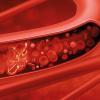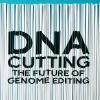Liquid biopsies are gradually becoming common frontline clinical tools, but how likely is it that they will replace tissue biopsies, and what might that mean for lab staff?

Cancer treatment in Wales broke fresh ground in April with the launch of a new trial to speed up the detection of lung cancer. The QuicDNA project, run by All-Wales Medical Genomics Service (AWMGS) working with multiple partner agencies, will explore how new testing technology might be applied during the diagnostic procedure for lung cancer. Can it provide quicker and more accurate results, capture the disease at an earlier stage in its development, create more time to devise and administer suitably potent treatment, and show how the test might be employed to detect other types of cancer?
The technology at the heart of the QuicDNA trial is the liquid biopsy.
Also known as the blood biopsy, and sometimes in other applications as the fluid biopsy, the liquid biopsy has come a long way in a very short time. The potential for detecting cancer signals in the blood first became a realistic proposition in the early 2010s, with the big leap into real-world clinical application coming just a few years later in 2016 when the US Food and Drug Administration approved the first liquid biopsy.
As with the tissue biopsy, the fundamental aim of the liquid biopsy is to detect the signs of cancerous material, but, as its name suggests, the liquid biopsy goes about its business in a completely different way.
When normal cells die they eject all sorts of biological waste products into the bloodstream, including fragments of DNA. Even more interesting, when cancer cells die they also deposit a range of debris into the blood, again including DNA.
Crucially, the fingerprint of the DNA emanating from the cancerous tissue has small variations compared to that of the DNA from the healthy tissue, meaning, for example, that’s it’s possible to tell the difference between the fragments of normal lung cells and the fragments from lung cancer cells.
The cancer-cell DNA that floats around in the blood is known as circulating tumour DNA (ctDNA), which is released by circulating tumour cells (CTCs). CTCs were first observed as long ago as 1897, but ctDNA is a far more recent discovery, with its existence and source confirmed during the 1990s. However, it was not until the advent and widespread availability of next-generation sequencing around 2015 that it became truly practical to decode ctDNA.
At that point the search for an effective technique to collect and examine the ctDNA began in haste. The hunt centred on a few common cancers, such as lung cancer, that shed larger amounts of ctDNA and so provide stronger signals than other types of cancer.

Liquid biopsies: other fluids
- Saliva: possible source of multiple cancer biomarkers, with ease of sampling and repeat tests.
- Urine: offers fewer circulating cells but rich with other biomarkers.
- Sweat: potential source of biomarkers such as proteins, nucleic acids and metabolites.
- Cerebrospinal fluid: harder to sample but ideal for detecting central nervous system cancers.
Trials
In 2016, the US Food and Drug Administration gave the go-ahead for the first liquid biopsy to aid in the detection of non-small cell lung cancer, though the focus of this test was not ctDNA but epidermal growth factor receptor (EGFR), a protein closely associated with the disease. Nevertheless, it showed that liquid biopsies had a future and since then a series of high-profile trials and research programmes have tested a range of biopsy techniques designed to seek out ctDNA.
One approach is to sequence every bit of DNA found in the blood. As this suggests it’s an all-encompassing technique that may not be especially efficient or precise. A second approach is to focus on just the ctDNA associated with a specific type of cancer. That might solve the question of precision but would make the test exclusive to that one form of cancer. A third approach has been to use methylation to switch certain genes in the ctDNA on or off in order to reveal the source of the cancer.
“Patients suddenly had much improved access to testing and therefore access to new treatments”
In trials all three methods have performed well enough, though the methylation approach has yielded slightly better results. However, its big advantage over the other techniques is that it is technically a little more straightforward and offers a greater potential for clinical application at scale and less expense.
Just as these promising first results are driving further research, the potential clinical benefits of the liquid biopsy are also under close investigation. Because it’s a simpler, non-invasive technique that can be applied repeatedly, its possibilities include detecting cancer early, pinpointing the targets for therapy and any treatment-resistance mechanisms, monitoring the effects of treatment in real time, and raising a much quicker alert of relapse.
While the research continues apace, the liquid biopsy has, thanks partly to that 2016 FDA approval, gradually become more of a feature of frontline clinical practice. At the University Hospitals Birmingham NHS Foundation Trust, Operations Manager in Molecular Pathology Brendan O’Sullivan has had first-hand experience of the technology.
The shift came a few years ago with the introduction of a new generation of EGFR drugs that were able to overcome the resistance seen in lung cancer patients treated with older drugs. “I think that pushed liquid biopsies forward massively,” says O’Sullivan. “Those patients would often be doing well on their first-or second-generation inhibitors, because they’re low toxicity with a high response rate, but then suddenly they would develop new symptoms and become incredibly ill within a week or two. So getting them in for a tissue biopsy was not always a fantastic idea. It was just quicker to get some blood, spin out the plasma and go from there.”
With that simple step, taken out of necessity, something seismic seems to have shifted in the approach to lung cancer patients. “There had previously been novel ctDNA testing,” says O’Sullivan, “but that was the first time that we had a big clinical demand for the liquid biopsy as a routine test.”
It also appeared to demonstrate with some clarity the fundamental benefit the new test could offer to patients and their doctors. “Patients suddenly had much improved access to testing and therefore access to new treatments. It was especially good for patients who had relapsed because they had become resistant to their existing drugs.”
Tissue & Blood biopsies: the pros and cons
Blood biopsy
Advantages
- Easy-to-take samples, minimally invasive procedure
- Quick turnaround of results
- Possible to detect cancer early
- Can monitor the disease and treatment in real time.
Disadvantages
- Procedures and effectiveness still being investigated
- Limited levels of ctDNA mean sensitivity can be low
- Risk of false negative results
- Only certain cancer types release ctDNA.
Tissue biopsy
Advantages
- Routine, well-established clinical practice
- Proven and standardised techniques
- Good sensitivity results
- Low false negative rate
- Can identify gene expression and mutations.
Disadvantages
- Invasive, can be painful and involve risk
- Repeated tests not often possible
- Offers only a fixed time and place snapshot
- Cannot detect cancer early
- Tissue may be inaccessible e.g. lung.
Pathways
However, it would be fanciful to suggest that the prime advantage of the liquid biopsy might cause the tissue biopsy to become redundant overnight. “There were hopes that ctDNA testing could replace tissue testing, but that hasn’t taken into account the fact that often you still need tissue biopsies to make a diagnosis,” says O’Sullivan. “Finding a mutation in the blood doesn’t necessarily give you a clear diagnosis and in that case you’d still need to use a needle on a patient or cut a piece of tissue out.”
The liquid biopsy is also not quite up with the tissue biopsy in a couple of other areas. The first is that it’s currently only useful for detecting the types of cancers that shed larger amounts of ctDNA into the blood; if the cancer doesn’t do that – and it’s often those not centred on the larger organs that don’t — it won’t get detected. The second is that it has so far returned lower sensitivity results than tissue testing.
But patients who are able to benefit from the immediacy of liquid biopsies could find that their treatment pathways are transformed as a result. The potential scenario is a much speedier affair, says O’Sullivan: “When patients come in with a clinical suspicion of lung cancer they could immediately take a blood sample and send it off for blood-based ctDNA testing. At the same time the patient is booked in to have a biopsy in a week’s time. In the interim, if the result comes back and a mutation is found, they just cancel the biopsy. The patient never has to go for an invasive procedure and they don’t have to wait another week or two to get a result. It speeds the whole thing up. In that first phase of treatment, the patient needn’t go anywhere near an endoscopist or a radiologist.”
In Wales, the QuicDNA trial is also focusing on lung cancer, and not solely because it’s one of the easier cancers to detect using the technology. “Lung cancer is among the most widespread cancers in Wales and the outcomes are not good,” says Dr Magdalena Meissner, Consultant Oncologist and QuicDNA project lead at AWMGS. “Patients are often diagnosed at an advanced stage, but at the same time lots of different treatments have been developed for lung cancer, so our aim with the trial is to see if we can speed up the diagnostic pathway.”
The liquid biopsy used for the QuicDNA will test over 500 genes to identify actionable mutations that can be targeted with a suitable drug, though the ultimate plan is to move to the methylation technique.
Until then, the study will be looking closely at patient outcomes. “We will see how patients respond to the treatments we prescribe based on the ctDNA results,” says Meissner, “and we will compare those results against the more standard practice. As well as showing whether we can save lives with this test, we also want to get a clear idea of the health economics and the cost effectiveness.”
Lab work
As in Birmingham, the idea that the liquid biopsy will replace tissue biopsies is still very much at the theoretical stage. “But we hope to add the blood biopsy to the existing pathway, and then maybe we can prevent patients from having repeat biopsies.” But that’s not to say it might never supplant the tissue biopsy: “If we do prove it is better, maybe the follow-on study will be where maybe we just do scans and liquid biopsies. I have lots of research plans to look for other markers in the bloods.”
As well as changing the experience for patients, the liquid biopsy might also usher in a new era for laboratory staff. The QuicDNA trial is certainly expected to generate a lot more work. “We are starting to grow our team,” says Meissner. The study has adopted a stepped approach during the early stages to avoid becoming overwhelmed. “We wouldn’t be able to cope with the number of samples, so we are starting with one hub and building on that, employing staff as we go.”
“We hope to add the blood biopsy to the existing pathway, then maybe prevent patients from having repeat biopsies”
That shorter process of taking blood rather than tissue from patients might have consequences that reach even further. “With tissue biopsies, we have the added step that somebody has to take that piece of tissue from the patient. It has to be set up. Then the sample has to be collected, prepared and sent to the pathology department for examination under the microscope and the histological first diagnosis.”
While the use of the liquid biopsy has the potential to collapse that lengthy procedure – “it’s probably saving two weeks”, says Meissner – doing so could shift more of the emphasis onto the work of the lab, which would suddenly become a more advanced and prominent link in the diagnostic chain. “Depending on what this study will show, we also have plans to move the test even earlier in the pathway, possibly to when the patient is seen by the GP,” says Meissner.
Although much development work and research remains, and regardless of what comes out of that, it’s clear that sooner rather than later liquid biopsies will become standard practice in clinical settings large and small. “It’s no longer a piece of novel technology only used by researchers or people in a rarefied tower somewhere,” says Brendan O’Sullivan. “It is becoming routine. This is something that new biomedical scientists and other technical staff, and everyone who works in the lab, should see as something they are going get involved in.”
Image credit | Ikon




